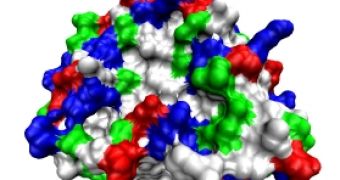The way in which metals bind to proteins inside all life forms has been a mystery for a very long time, but now, thanks to researchers at Newcastle University, the first glimpse as to how this happens exactly is available. Theories on the matter existed up until this point, but none offered satisfactory proof to back up its claims. This latest research points out the exact causes that make life possible.
Previous assumptions held that proteins, which are life's "toolkit," in that they are responsible for almost everything that goes on in a cell, bound with metals based on preferences, meaning that some molecules preferred copper over manganese. However, no one has been able to explain exactly how this attraction occurred.
The recent study tells us that this attraction never existed. Instead, proteins bind with metals depending on the place in the cells where the binding happens. According to the new theory, specific places in the cell cause specific proteins to bind with specific metals. For example, copper is captured by proteins only near the periplasm, an outer area of the cell. Other metals are scarce there and the attraction between proteins and the metal is very strong.
On the other hand, in an area situated at the middle of the cell, called the cytosol, manganese atoms bind with the proteins. This separation allows the molecules to bind to specific metals only. While it’s true that certain proteins bind to a specific metal only, the main cause for this is the location of the metal atoms inside the cell. As proof, researchers established that the manganese-loaded molecules travel to the outer reaches of the cell only after they bounded with their metal.
This discovery has extensive applications in synthetic biology, a field of medicine that strives to create useful compounds directly inside the cell, if the right amount of metals to be injected in each cell is correctly identified. This research field could take a huge leap forward if all mechanisms pertaining to the bounds that occur on a microscopic level are identified.

 14 DAY TRIAL //
14 DAY TRIAL //